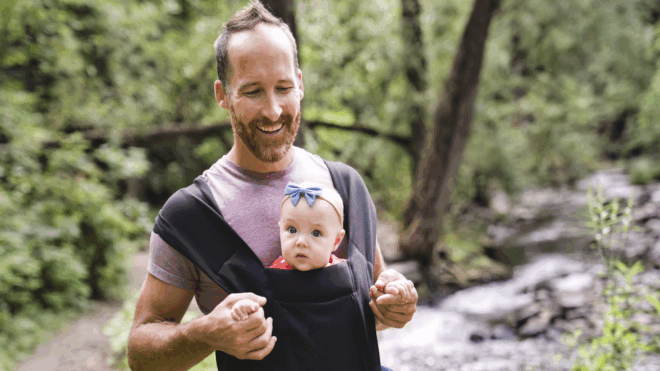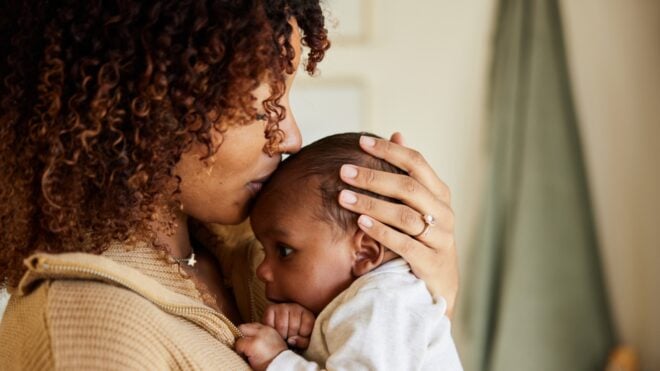
A Little Preparation Pays Off

We get it, flying is a hassle, no matter which way you swing it. From searching through endless discounted ticket sites to find the best deal, to knowing where to sit (or what time you're actually supposed to arrive at the airport), sometimes air travel can feel like a headache. We've consulted the pros to find out what they do to make flying less stressful and learned some amazing tricks in the process (including a little-known fact about flying with booze). Keep reading for more.
Get an Airline Credit Card

Even if you're weary of credit cards, every frequent flier should have an airline-sponsored credit card. Why? Miles, baby. Most cards have low to no annual fees and include great perks like one (or more) miles per dollar spent and free checked luggage (for the first bag). Some cards even allow for early boarding, preferred check-in at airports and entrance into highly coveted airport lounges where you can charge your devices and kick back while waiting for your flight.
Book Early and Know the Best Days to Fly

If you're looking for deep discounts on flights, make sure you book as far in advance as possible and know the best days to fly. Typically, Tuesday through Thursday flights offer cheaper fare than Mondays, Fridays and weekends, although that can change depending on the airline. Also, make sure to check flights from alternate airports, as some can cut the cost of your ticket in half.
Red-eye Flights Add Green to Your Wallet

If you're the type of person who can sleep just about anywhere, a great way to save money on ticket prices is to fly overnight. Red-eye flights require herculean sleeping strength but also come at a deep discount versus daytime bookings. Just make sure to pack a neck pillow because ones from the airlines are used, flat and offer little (if any) support.
Think Before You Dress

You can spot a pro traveler by their footwear. Someone who flies frequently knows better than to wear difficult-to-remove shoes to the airport, and they never, ever wear sandals. Why? When you have to remove your shoes to walk through security, you'll have to go barefoot, where thousands of other bare feet have walked, increasing your risk of picking up a nasty foot infection. Also, elastic waistbands will be your best friend, especially during long, cramped flights.
TSA PreCheck Is Worth Checking Out

If you're a resident or citizen of the U.S. without a criminal record, you seriously should consider signing up for the TSA PreCheck program. Becoming a trusted traveler costs $85 and lasts for five years, giving you the ability to sail through a quicker security line and, in most locations, you won't have to remove your shoes. If you're active-duty military (or an active-duty dependent), enter your ID number in the trusted traveler section while booking your flight to get the benefits of PreCheck without the fee.
Don't Check Baggage

Pro travelers know that paying for checked bags is a waste of valuable cash, so they pack everything they need in their carry-ons. As a rule of thumb, travelers are allowed one carry-on (that fits under the seat or in the overhead bins), as well as one personal item (such as a briefcase, backpack, diaper bag or purse). By utilizing both options, travelers can fit everything they need for a trip, skip paying excessive baggage fees and forego waiting forever at baggage claim.
Have Unique Luggage

If you have to bring a suitcase, do yourself a favor and get luggage that stands out. Nearly everyone has the standard black/navy blue rectangular zip-up suitcase, and that makes retrieving your luggage at baggage claim a headache. If you're in the market for new suitcases, go for bright colors and patterns. If you can't afford to replace what you've got, add a splash of color with a decorative hankie tied around the handle to spot your bags quickly.
Weigh Your Bags

Another suitcase tip is to weigh them before you arrive at the airport. Most airlines limit checked bag weight to 50 pounds (per suitcase). If your suitcase is overweight, you'll have to open it up in front of everyone and remove items to bring the weight down or pay a costly overage fee. Neither are much fun, so instead, invest in a cheap digital luggage scale that straps onto your suitcase and will tell you the weight, giving you time to adjust before you reach the airline counter.
Pack Your Chargers in Your Carry-on

This may seem like simple advice, but you'd be surprised to know how many people (without thinking about it) pack their electronic chargers in their suitcase instead of their carry-on. Most airports and airplanes are outfitted with outlets, giving you the chance to keep your devices fully juiced. Plus, if the airlines lose your luggage, you won't have to also deal with a dying phone. Don't worry, chargers are allowed through TSA and won't cause you (or your bags) to be searched.
Premium Seats Suck But First Class Is Totally Worth It

When booking your airline tickets, you'll likely be offered something called "premium seating." This more-expensive ticket option boasts seats with more leg room and free cocktails, making it seem like a bargain. Trust us, it's not. The seats are still small, the extra leg room is nominal and the free drinks only come through once or twice when everyone else gets beverage service. On the other hand, first class tickets, which are expensive, are totally worth the splurge if you can afford it.
Skip Expensive Airline Meals

Many people don't realize it, but you're totally allowed to bring food to the airport (with a few exceptions). According to the TSA website, dry, solid foods are 100 percent allowed through the security line and won't get you an awkward pat-down. Sandwiches, hard cheese, dried meats, nuts and crackers are all A-OK to bring in your carry-on, saving you money when it's time to eat. While spreadable items and liquids/gels are still restricted to 3.4 ounces, you're good to go when it comes to that foot-long sub.
Flexible Travel Equals Airline Benefits

While you can't always be flexible about your flight times, having a little wiggle room for your arrival may be the ticket to big rewards from your airline. Often, planes are overbooked, meaning airlines are always looking for volunteers to be bumped from a flight. If you're able to adjust your schedule, you may also be eligible for airline dollars and, possibly, miles. Some travelers get upwards of $1,000 for their delay, a free hotel stay (if the flight is the next day) and more. Just ask!
Reserve Seats When Booking

If you don't often book flights for yourself or your family, you might not realize that you can also select your seats on most flights at the time of booking (although some airlines like Southwest don't provide assigned seating). If available, it's smart to pre-select your seats, especially if you're traveling with family. This way you can be assured you're going to sit together or, if you're traveling alone, that you're not stuck in the dreaded middle seat.
Arrive Early

Airlines do not play when it comes to late boarding. Once the gate door is closed, there is no way a passenger with poor time management is getting on that plane. Arriving early ensures you'll always make your flight. The rule of thumb for air travel is to arrive at the airport two hours before your boarding time for domestic flights and three hours prior to international flights. This gives you plenty of time to get through the TSA check point, find your gate and be ready to board without hassle.
Check in as Early as Possible

Check in 24 hours before your flight! Remember how we talked about flights being overbooked? Early check-in lets the airline know you're going to make the flight, saving you from getting bumped at the last minute. Plus, if you're hoping for an upgrade, airlines will use time of check-in to decide who gets the coveted seating assignment. Also, for airlines without seat assignments, early check-in usually gives you a primary boarding zone and a chance at a better seat.
Download Entertainment

There's no better use for a smartphone or tablet on a long flight than as a mode of personal entertainment. Many digital subscriptions now offer patrons the ability to download songs, movies and games that users can access while offline (making them safe for flights). Whether it's Spotify, Netflix or games from the app store, a pro traveler knows having access to entertainment is a great way to fight in-flight boredom (especially if no in-flight entertainment is provided).
You Can Bring Booze in Your Carry-on, But ...

It's true, booze IS allowed in your carry-on, although there are some rules you need to know ahead of time. Mini (1.7 ounce) alcohol bottles under 140 proof are allowed, but full-sized bottles aren't (you can bring them in your checked luggage). The bottles must be stored in a single quart-size plastic baggy, but you can bring as many as will fit "comfortably" in the bag.
[Editorial note: While you may bring mini bottles of hootch on board, FAA regulations stipulate that you can't actually consume it (unless you find a fight attendant who is willing to serve it to you).]
Bring an Empty Water Bottle in Your Carry-on

While everyone knows you can't bring liquids or gels in excess of 3.4 ounces through the TSA checkpoint, you can and should bring an empty water bottle in your carry-on to fill up once you're past security. It's easy to fill them at any public water fountain, and you'll be grateful you have access to a cool drink while you're in-flight and waiting for the complimentary drink cart to roll through (which can take a long time).
Pack for Delays When Traveling With Kids

It seems like a no-brainer but sometimes, when parents think they're just going on a quick flight with their kids, they don't pack the essentials (namely: snacks and activities) to keep their children occupied. It's only a problem when flights are delayed. Some delays can last hours, and passengers won't have snack or drink service while waiting on the tarmac, making for some very cranky people. Plan for the worst-case scenario when traveling with your little ones to fly like the pros do.
Bring Your Own Headphones, Unless They're Bluetooth

The great news is that many domestic airlines typically offer passengers a free pair of low-budget earphones to use with the in-flight entertainment on longer flights (others may charge for headphones). Professional fliers always bring their own pair because the ones from the airline aren't known for their amazing sound quality. Word of warning: Don't even bother with Bluetooth headphones, as they won't work in flight (and aren't allowed).




